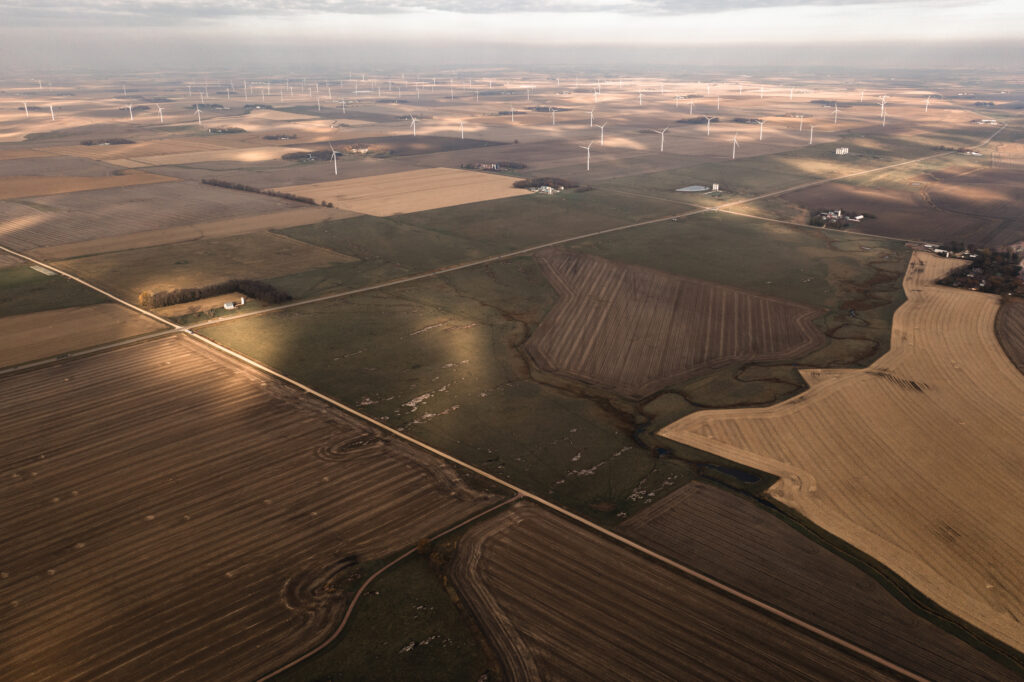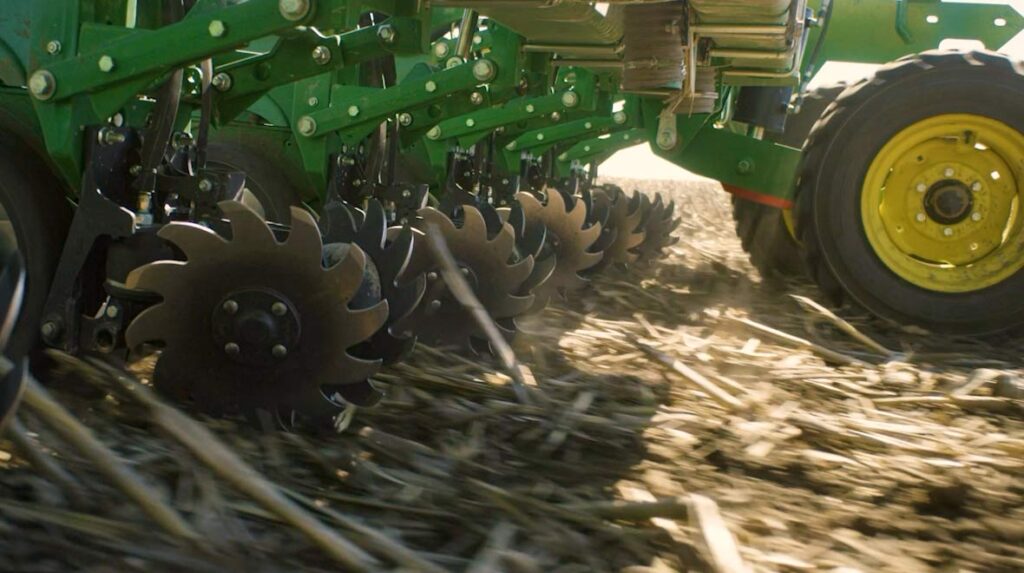Gevo is committed to producing a sustainable source of fuel that reduces our world’s carbon footprint. Through regenerative agriculture, and practices like reduced or no tillage, we’re one step closer to that goal.
For years, farmers have used tillage (the practice of turning over the soil, often with mechanical tools or tractors) as a way to manage weeds, keep the field black to encourage soil warming for optimal planting conditions, incorporate manure and/or fertilizer, reduce crop residue, and break up compacted soil.
While tillage does have a role in agriculture for some farmers, it can also break up important fungal networks in the soil, called mycorrhizae, that are essential for a functioning soil microbiome. Tillage promotes the quick breakdown of residue. In addition, tillage reduces the rate of water infiltration because the macro and micro soil pores within the soil are destroyed. This leads to increased soil erosion.

Methods of Reduced Tillage
Every farmer plans their management practices based on their own farm goals, location, soil type, crop, and other factors. Some examples of regenerative-based reduced tillage practices include:
- Reduced tillage: A catch-all term for any tillage system that is less intensive than traditional tillage. When used more specifically, it can refer to any tillage system that maintains at least 15 percent coverage after planting.
- Conservation tillage: Any tillage system that maintains at least 30 percent of the soil surface cover by residue after planting.
- No-till: Soil is left completely undisturbed from harvest to planting, except by fertilizer injection or planters.
- Strip-tillage or zone-tillage: Tillage in only the seed row of a field, leaving the unplanted spaces untouched. In zone-tilling, the roots of last year’s corn crop are left in the field to decompose and return much-needed organic matter to the soil, while the new crop is planted 15 inches to the side.

Why should Farmers Implement Reduced Tillage?
Regenerative agriculture is founded on working with the processes of nature, and nowhere is nature more efficient than the soil microbiome. By reducing tillage on their fields, regenerative farmers can expect to see the following benefits:
- Improved yields: Researchers at Stanford University found that corn yields improved by an average of 3.3 percent in fields managed with conservation tillage.
- Strengthened soil structure: Reducing tillage preserves soil aggregates, leaving large macro pores in the soil that allow for water infiltration, soil resiliency, air exchange, and reduce soil erosion.
- Decreased erosion: By leaving the soil covered with residue, this helps to reduce the impacts of wind and water erosion on the soil. With reduced tillage, this allows the soil aggregates to remain in place allowing water to infiltrate and reducing runoff. Increasing residue cover in a field from 0 to 41 percent reduces soil loss by 9.2 tons per acre.
- Carbon sequestration: In a Minnesota study, tilling a wheat field, which then promotes the breakdown of organic matter and disturbs the soil microbiome, led to over 3,800 pounds of carbon dioxide lost into the atmosphere.
- Reduced field passes: With reduced tillage, farmers run their tractors over their fields fewer times, meaning reduced soil disturbance, and lower fuel demands.
- Water Storage: Increased water infiltration rates and water-holding capacity lead to the soil being able to accept and retain water more efficiently and make it available to support plant growth.
Reduced Tillage: The Bottom Line
When producing a feedstock like corn, Gevo seeks to create the most fuel with the lowest environmental impact. Reducing tillage lowers the labor burden for farmers, while keeping carbon in the ground and improving the plant yields.
Reducing tillage to any degree, whether it be conservation or no-till is a regenerative agriculture technique that is helping Gevo usher in a new era of bio-based renewable fuel production that puts the planet first.
